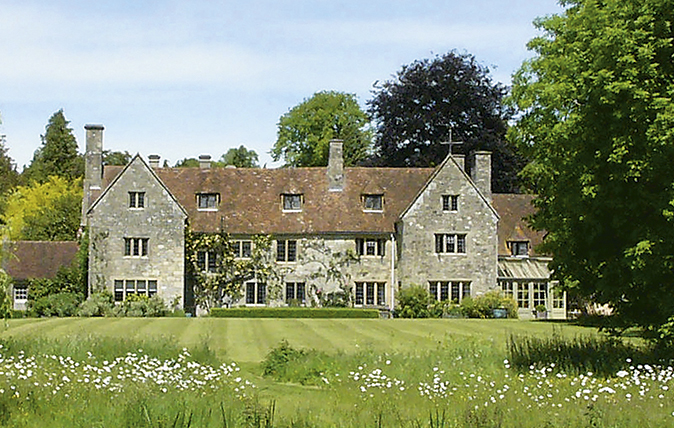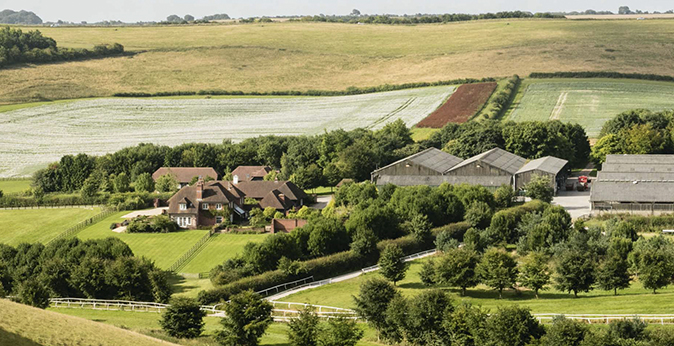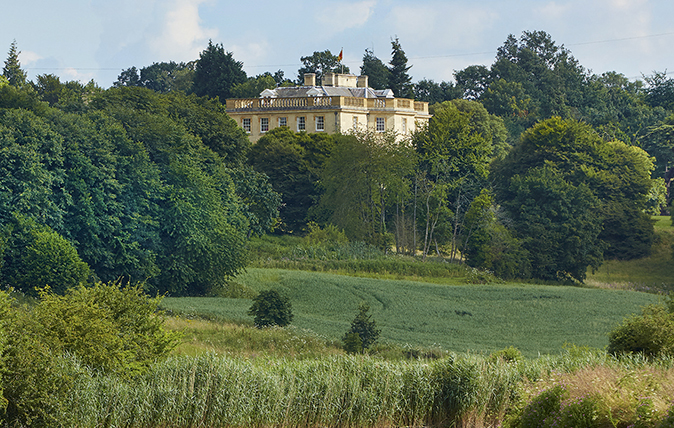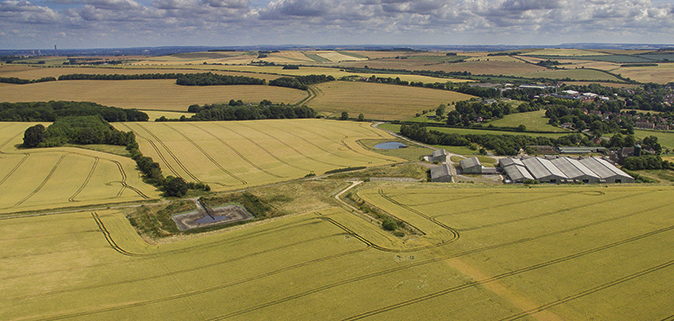Fabulous estates for sale
Do you want a farming, sporting or investment estate? With these four properties, you don’t have to choose.


For reasons we’re all too familiar with, it’s been slim pickings on the farming and estates front so far this year. Consequently, the recent launch onto the market of four substantial, but very different agricultural estates—valued together at a whopping £85.5 million—is guaranteed to whet the appetite of farmers, sportsmen, developers and long-term investors alike.
A field-sportsman’s dream, the immaculate, 1,127-acre Ballington Manor estate (Fig 1) on the banks of the River Wylye, 10 miles from Salisbury, is for sale through Savills (020– 7409 8882) and Woolley & Wallis (01672 515252) at a guide price of £17.5 million for the whole, or in two lots, with the Grade II-listed, Elizabethan manor house, a mill house, seven estate dwellings and a courtyard of six commercial offices set in 76 acres of parkland, meadows and farmland, on offer at £6.5m.
Easily accessible from London by road and rail, the estate lies within the glorious Cranborne Chase and West Wiltshire Downs AONB, whose sparkling chalkstreams and dramatic, undulating terrain have long proved irresistible to fishermen and guns from all around the world. ‘Ballington Manor is widely recognised as one of the finest private shoots in southern England, but it’s rare for an historic estate in this part of Wiltshire to combine outstanding game shooting with superb chalkstream fishing and a profitable farming enterprise, whose conservation work won the coveted Farming & Wildlife Advisory Group Silver Lapwing award in 2002,’ observes Alex Lawson of Savills.
According to medieval records, in 1420, Ballington Manor, then known as Little Bathampton, was inherited by landowner Thomas Bonham’s grand- daughter, who married Robert Mompesson. The estate remained with the influential Mompesson family until 1783, when it was sold to Edward Seymour, Duke of Somerset, and next changed hands in 1910.
The present owners, who bought Ballington Manor in 1996, have created not only a delightful family home, but a successful farming and sporting estate with diverse income streams. At its heart is the beautifully renovated, eight-bedroom, stone manor house, which dates from the late 16th century, with additions and alterations from about 1930, and is surrounded by Elizabethan-style gardens designed by Penelope Hobhouse; these run into a network of paths and bridges that cross the River Wylye to reach the meadows beyond.

Launched on the market in today’s COUNTRY LIFE—at a guide price of £20m through Knight Frank (01488 688539)—the picturesque, ring-fenced Barbury Castle estate (Fig 2) near Marlborough, is another of Wilt- shire’s finest, covering some 1,799 acres of classic rolling chalkland in the Marlborough Downs—part of the Wessex Downs AONB. Diversity is also the name of the game at Barbury Castle, which sits in a won- derfully secluded location just south of the Iron Age hill fort of that name on the ancient Ridgeway, four miles from Marlborough.
The Barbury Castle estate comprises 889 acres of arable farmland rotated with spring malting barley, winter wheat and morphine poppies; 177 acres of previously cropped pasture; 123 acres of railed paddocks and permanent pasture; and 248 acres of downland, which provide excellent grazing for the estate’s award- winning flock of 900 sheep. It also boasts 205 acres of mature woodland, which provides perfect cover for a challenging high-bird pheasant and partridge shoot, along with excellent stalking for the abundant roe, fallow deer and muntjac that roam its undulating acres. There is huge potential to develop the shoot, currently run on 11 drives with half a dozen let pheasant and partridge days a year, the agents suggest.
Exquisite houses, the beauty of Nature, and how to get the most from your life, straight to your inbox.
Tucked away in the north of the estate with separate access, the Barbury Castle Racing Stables have been let since 2002 on a rolling annual tenancy to racehorse trainer Alan King, who has sent out an impressive list of National Hunt and Flat winners from his yard. In addition to a three-bedroom farmhouse, three flats and three staff houses, the 11-acre training facility includes 87 American barn-style loose boxes, a two-furlong all-weather exercise circle, a 1½ furlong schooling strip, a manège and several post-and-railed paddocks. The trainer also has access to a number of testing gallops scattered around the estate.
Other equestrian facilities include a popular point-to-point course and the renowned Barbury International Horse Trials created by the estate’s owner, with a course designed by Mark Phillips, every July. He also built a new main farmhouse, the 7,306sq ft, six-bedroom Sharpridge House, completed in July 2008, which stands down a near-mile-long drive at the heart of the estate, with spectacular south-easterly views over Barbury’s rolling acres beyond.

Developers starved of projects, farmers with rollover funds burning holes in their pockets or investors happy to take a long-term view will be tempted by two important, one-off, mixed farming and investment propositions: the 1,054-acre Nuneham Courtenay estate (Fig 3), five miles from central Oxford, and the 1,999-acre Compton Farms (Fig 4), between Compton and East Illsley, Berkshire—both for sale through Savills (01865 269179) at guide prices of £22m and £25m respectively.
Owned for two centuries by the Harcourt family and, since 1948, by The Oxford Funds, which holds £2.6 billion of investment funds on behalf of the University of Oxford, the Nuneham Courtenay estate is being sold either as a whole or in three lots, following the retirement of the estate’s principal farm tenants.

Lot 1, at £10.5m, comprises Nuneham Park, including the Grade II*-listed Nuneham House, built in 1757 and set in gardens and grounds originally laid out by William Mason and Capability Brown, together with 510 acres of farmland and various houses and cottages. The main house, described by George III as ‘the most enjoyable place I know’, is let under a 125-year lease with 98 years remaining, which may appeal to a seriously long-term investor.
Lot 2—Upper Farm, at £7m—includes two houses, modern and traditional farm buildings and 537 acres of commercial farmland. Lot 3—The Village Portfolio, at £4.5m—comprises an interesting mix of 11 residential properties, commercial premises and garden land close to Oxford, 7.4 acres in all.
A substantial landholding set within the magnificent landscape of the North Wessex Downs AONB between Newbury and Oxford, Compton Farms was established by the Agricultural Research Institute (ARI) in 1937 as a research facility with emphasis on arable and dairy farming. Following the relocation of the ARI to Pirbright, Surrey, its remaining farming and property assets around Compton (apart from the former science campus), including the main farm, 18 houses, six farmsteads with modern farm buildings and various commercial and ancillary properties, are being sold as a whole or in 25 lots, at prices ranging from £10,000 for a 3.3-acre amenity area in Compton village to £8.15m for the 890-acre Mayfield Farm.

